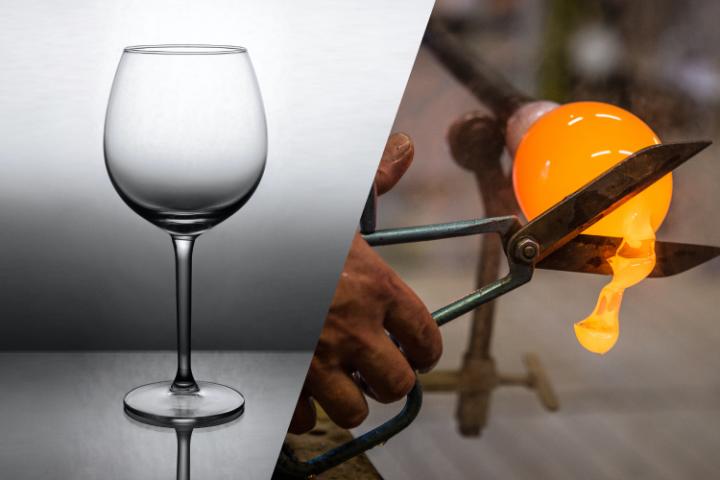A clearer view of what makes glass rigid

A team of scientists led by the University of Tokyo uses computer simulations to study the rigidity of amorphous solids like glass
Credit: Institute of Industrial Science, the University of Tokyo
Researchers led by The University of Tokyo employed a new computer model to simulate the networks of force-carrying particles that give amorphous solids their strength even though they lack long range order. This work may lead to new advances in high-strength glass, which can be used for cooking, industrial, and smartphone applications.
Amorphous solids such as glass–despite being brittle and having constituent particles that do not form ordered lattices–can possess surprising strength and rigidity. This is even more unexpected because amorphous systems also suffer from large anharmonic fluctuations. The secret is an internal network of force-bearing particles that span the entire solid which lends strength to the system.
This branching, dynamic network acts like a skeleton that prevents the material from yielding to stress even though it makes up only a small fraction of the total particles. However, this network only forms after a “percolation transition” when the number of force-bearing particles exceeds a critical threshold. As the density of these particles increases, the probability that a percolating network that goes from one end to the other increases from zero to almost certain.
Now, scientists from the Institute of Industrial Science at The University of Tokyo have used computer simulations to carefully show the formation of these percolating networks as an amorphous material is cooled below its glass transition temperature. In these calculations, binary particle mixtures were modelled with finite-range repulsive potentials. The team found that the strength of amorphous materials is an emergent property caused by the self-organization of the disordered mechanical architecture.
“At zero temperature, a jammed system will show long-range correlations in stress due to its internal percolating network. This simulation showed that the same is true for glass even before it has completely cooled,” first author Hua Tong says.
The force-bearing backbone can be identified by recognizing that particles in this network are must be connected by at least two strong force bonds. Upon cooling, the number of force-bearing particles increases, until a system-spanning network links together.
“Our findings may open up a way towards a better understanding of amorphous solids from a mechanical perspective,” senior author Hajime Tanaka says. Since rigid, durable glass is highly prized for smartphones, tablets, and cookware, the work can find many practical uses.
###
The work is published in Nature Communications as “Emergent solidity of amorphous materials as a consequence of mechanical self-organisation” (DOI: 10.1038/s41467-020-18663-7).
About Institute of Industrial Science (IIS), the University of Tokyo
Institute of Industrial Science (IIS), the University of Tokyo is one of the largest university-attached research institutes in Japan.
More than 120 research laboratories, each headed by a faculty member, comprise IIS, with more than 1,000 members including approximately 300 staff and 700 students actively engaged in education and research. Our activities cover almost all the areas of engineering disciplines. Since its foundation in 1949, IIS has worked to bridge the huge gaps that exist between academic disciplines and real-world applications.
Media Contact
All latest news from the category: Materials Sciences
Materials management deals with the research, development, manufacturing and processing of raw and industrial materials. Key aspects here are biological and medical issues, which play an increasingly important role in this field.
innovations-report offers in-depth articles related to the development and application of materials and the structure and properties of new materials.
Newest articles

High-energy-density aqueous battery based on halogen multi-electron transfer
Traditional non-aqueous lithium-ion batteries have a high energy density, but their safety is compromised due to the flammable organic electrolytes they utilize. Aqueous batteries use water as the solvent for…

First-ever combined heart pump and pig kidney transplant
…gives new hope to patient with terminal illness. Surgeons at NYU Langone Health performed the first-ever combined mechanical heart pump and gene-edited pig kidney transplant surgery in a 54-year-old woman…

Biophysics: Testing how well biomarkers work
LMU researchers have developed a method to determine how reliably target proteins can be labeled using super-resolution fluorescence microscopy. Modern microscopy techniques make it possible to examine the inner workings…





















